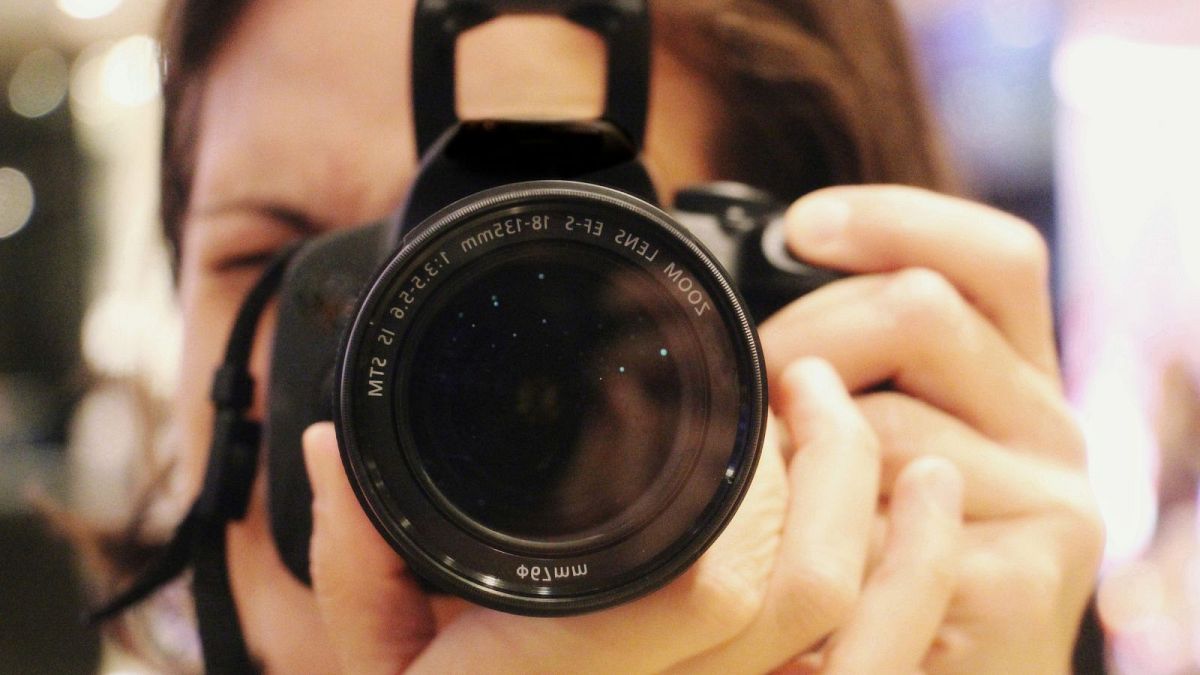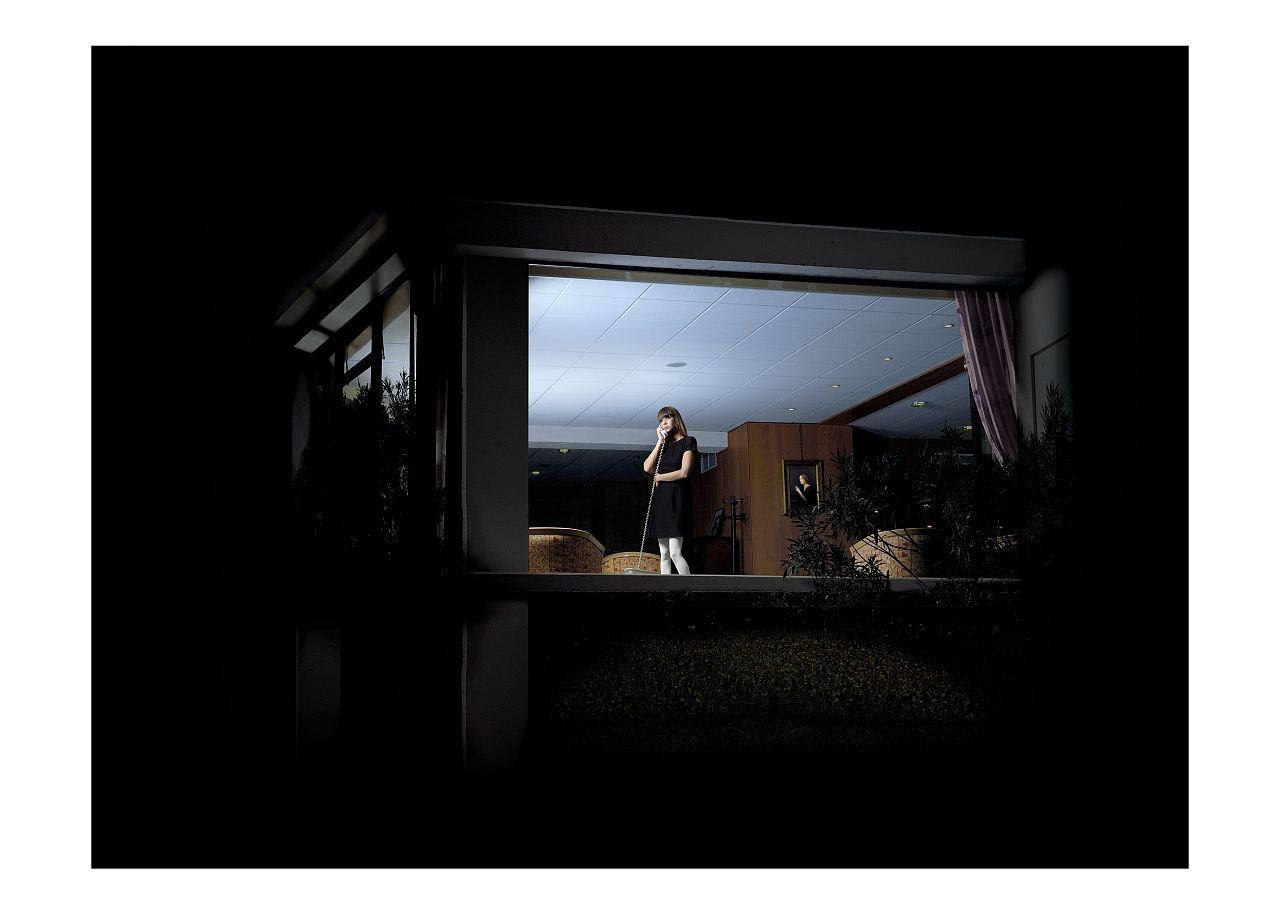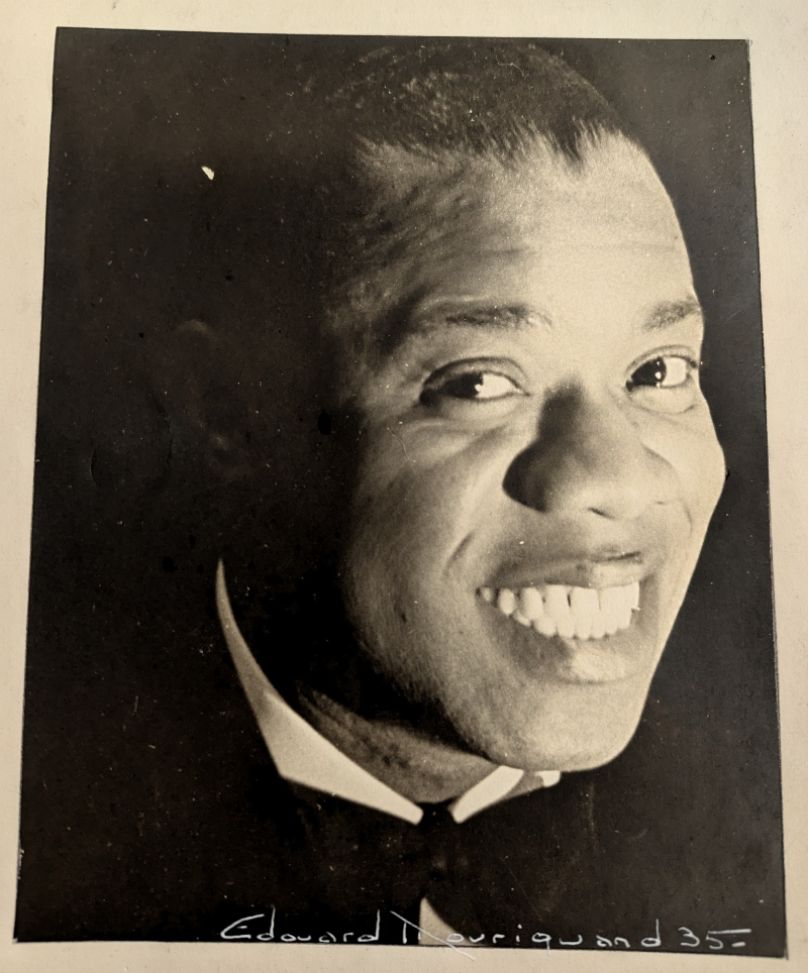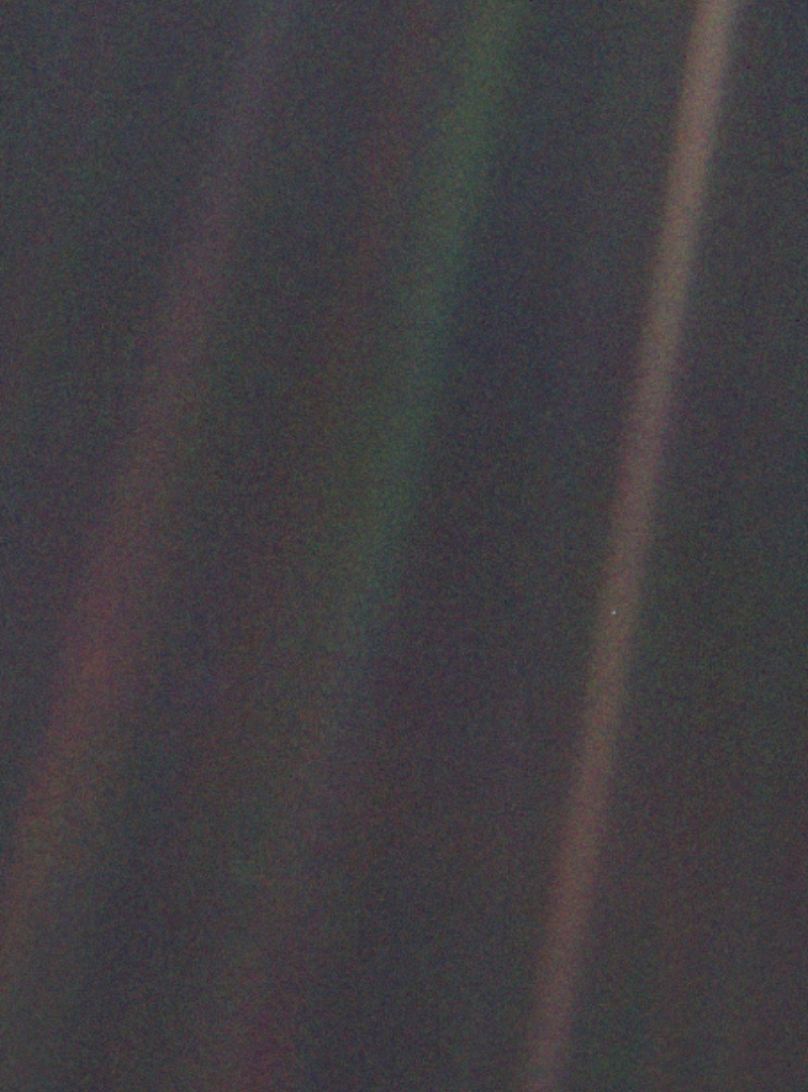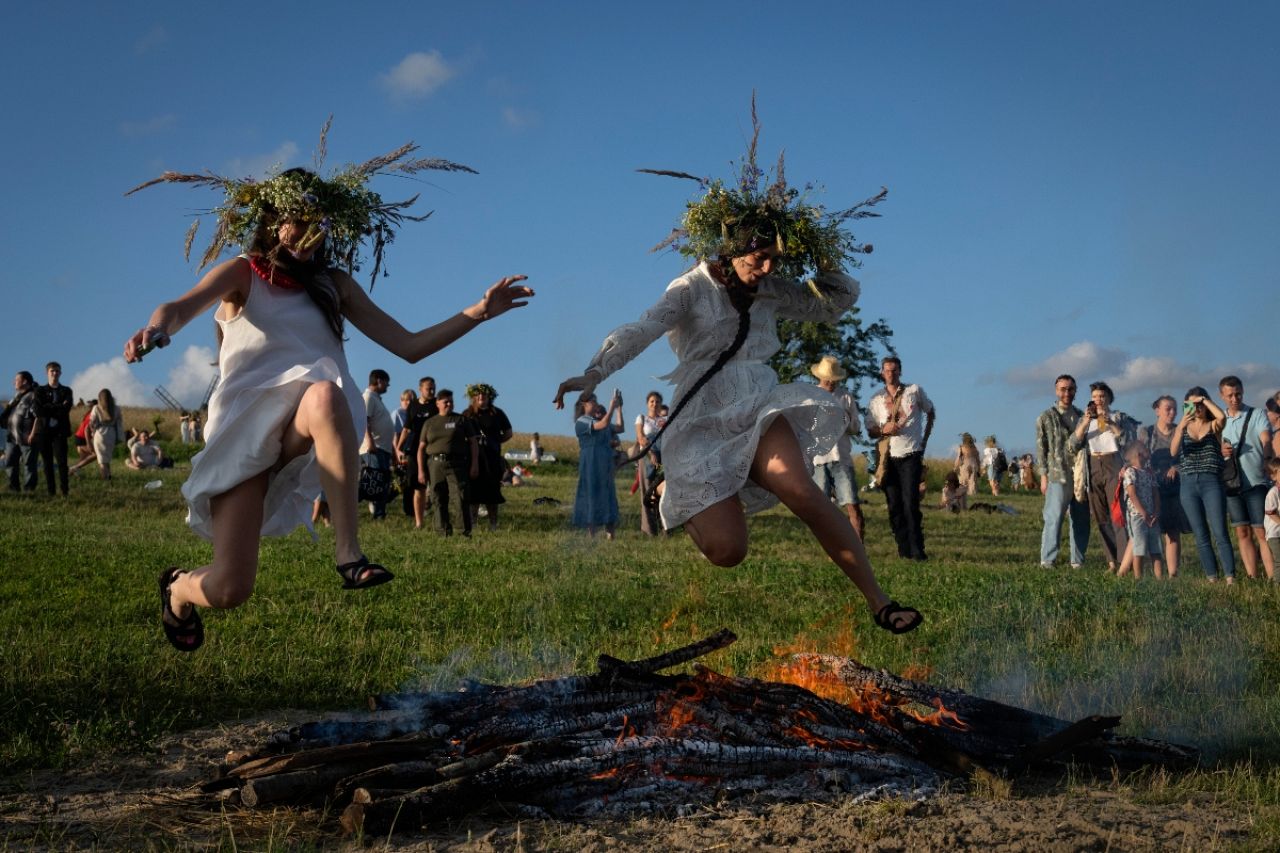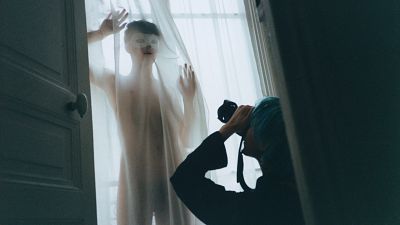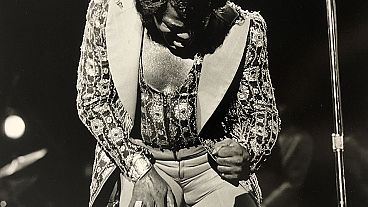The Euronews Culture team handpicks and shares their favourite photos for World Photography Day.
Today is World Photography Day, an annual celebration to raise awareness about the importance of photography.
The day dates back to 1837, when Frenchmen Louis Daguerre and Joseph Nicephore Niepce created the Daguerreotype, the first publicly available photographic process. It takes place on this day to commemorates the declaration of patent for the invention by the French government.
It’s a day to celebrate photographers and their craft, the process of documenting memories, as well as to learn about other people and cultures through the medium of photography. Above all, it aims to show that photo lovers from all over the world can enjoy an artform on a common platform, allowing them to embrace memory through a lens that can highlight or transcend the confines of reality.
The Euronews Culture team has handpicked their favourite photos and wish to share them with you - today of all days.
‘Nightshot’ - 2008
By: Olivier Metzger
My favourite photography is the kind that feels like glancing into the warm glow of an open-curtained window on a pitch black night. I shouldn’t look, the life inside is secret. But in that momentary peak, you catch glimmers of people. Maybe an old Christmas tree. A broken-eared cat ornament. The flickers of faces on TV. Fleeting fragments of something, or someone, that become freeze frames for your mind to piece together into meaning. This photograph by the late French photographer Olivier Metzger captures this quite literally.
Part of his 2008 ‘Nightshot’ series, for which he won the BMW Special Prize, a woman stands on the phone, framed by a large window of light that's swallowed in darkness. Throughout his career, Metzger was especially fascinated with night, playing with lighting and shapes to capture a cinematic essence of the world.
This one in particular reminds me of an Edward Hopper painting in the way it holds an unspoken moment; those sinking realisations of loneliness and longing that are cradled by artificial ambience. There’s a dreamlike quality to it, like sleepwalking into a place that’s only half familiar. There are small details in the home, a painting, some furniture - but it also feels hollow and fake, like a dollhouse floating in an abyss.
While unsettling, I always feel like the hidden parts of myself are understood and set free by such qualities in photography. The night might be dark and full of terrors, but it can also be where we find and rearrange parts of ourselves - or spy through strangers' windows. Amber Bryce
'Louis Armstrong' – 1935
By: Edward Mouriquand
This photo has been with me ever since I can remember. It was taken by my great uncle, who was a photographer and sadly died in his late thirties. He took snaps of a lot of musicians on tour and got to go backstage to hang out with them. According to my late grandfather, who always told me I reminded him of his late brother Edward, his sibling was a huge jazz fan, so meeting the great Louis Armstrong was something he was positively giddy about.
The story goes that Satchmo was positively charming, always looking out for people around him and treating them to boisterous explosions of laughter. However, the legendary New Orleans trumpeter was not in the slightest bit interested in talking about music or his craft. His main preoccupation was food. Edward was apparently very disappointed that all Armstrong could talk about was how much he liked French cuisine – offal in particular – and kept asking my great uncle where to eat after the gig.
The photo was passed on to my grandfather, who hung it in his study area at home. Whenever I visited him, I would see this beaming, smiley face on the wall – a face I would associate with the smell of Drum tobacco (my grandfather’s vice of choice) - and there was something about Armstrong’s megawatt smile and twinkly eyes that always brought me joy. I had no idea who the man in the photo was at the time – he was just this ray of sunshine in the room that had me mesmerized. I’d later learn about Armstrong and grew to love his music, becoming envious that a family member I’d never met got to meet a genuine music legend. And vice-versa.
When my grandfather died, the photo was passed onto me, and it is without a doubt one of my most treasured possessions. It not only reminds me of the power of intergenerational memories, of a life I never got to share with one of my relatives whose energy reportedly matched my own, but also of how icons – no matter their artistic field – are humans like the rest of us. They have desires that aren’t elevated because of their sublime status in popular culture; their wants can be simple and no matter their importance in history or the weight of the legacy they leave behind, we’re all human. Warts and all. It's worth cherishing the small things we take for granted - even if that is a craving for a tasty meal.
I’ve kept this with me, and it has even served me whenever I’m interviewing someone famous: don’t fawn, treat them with the respect that you would anyone else... and don’t forget to have a handy food recommendation should they express a hankering for hearty French food. Above all though, this picture never fails to fill me with happiness. That's the power of photography. After a bad day, if I catch Satchmo smiling at me from the corner of my eye, things don’t seem so bad after all. Life get tasty again. What a wonderful world, indeed. David Mouriquand
'Pale Blue Dot' - 1990
By: NASA
One photograph that I absolutely adore is the iconic Pale Blue Dot.
To give you a bit of background, like many kids, I went through all sorts of formative phases: dinosaurs, LEGO, magic tricks, Michael Jackson - and then there was my space phase. My room was covered with Star Wars posters, I had a NASA lava lamp by my bed and I spent many a night playing with a cheap toy telescope that never quite worked. For my 8th birthday, I even insisted on a space-themed party, complete with party rings, Space Raider crisps and an astronaut cake!
At the height of this space fascination, I remember seeing the Pale Blue Dot image in a book at my library, and it blew my little mind. The image, taken by NASA's Voyager 1 in 1990 from a staggering distance of 3.7 billion miles, shows Earth as nothing more than a tiny speck - less than a pixel - against the terrifying but mesmerising emptiness of space.
The photograph came about thanks to astronomer Carl Sagan, who suggested that Voyager turn its camera back toward Earth as it was leaving the solar system. As Sagan beautifully put, “Look again at that dot. That's here. That's home. That's us. On it everyone you love, everyone you know, everyone you ever heard of, every human being who ever was, lived out their lives.”
Now, at 8 years old, the full weight of this existential perspective may have gone over my head, but I still remember being in awe of how small the earth looked in the grand scheme of things. As I grew older I came to appreciate the deeper meaning behind the image - the beautiful absurdity of human existence, the surreal, wondrous gift of life, and now more than ever, the growing realisation of our responsibility to cherish and protect this tiny blue miraculous dot. Theo Farrant
'Russia Ukraine War Pagan Festival' – 2024
By: Efrem Lukatsky (AP)
I’d be lying if I said this photo had stayed with me since I first saw it in June, never leaving my mind. Quite the opposite, really. In my job as a freelance journalist, I have to look at a lot of photographs, some rather more challenging than others; this image overload can make it hard to sort through and recall the photos you’ve seen, even if they are quite remarkable.
When asked to choose an image to celebrate World Photography Day, though, I suddenly remembered a scene that brought me a moment of lightness – and seemed to be portraying such a moment too. Photographer Efrem Lukatsky (for the Associated Press) captured the midsummer festival of Ivana Kupala: so full of fire jumping, flower crowns and dancing that it would be easy to forget about the bombing and blackouts that have likely become a fact of life for many of those frolicking in that bucolic park an hour south of Kyiv.
What I love about this image is, in many ways, what I love about the whole series. There’s something about the movement he captures, but particularly jumping, that conveys a sense of freedom – a moment of letting go, simply trusting that you will make it over the fire that burns beneath you.
Participants told the AP that this keeping alive of Ukrainian traditions was an act of defiance against the destruction of local culture, and I feel this sentiment comes through in the image, which is full of energy and – at least it seems to me, as someone too much of a wuss to ever go fire jumping – bravery. The crowds behind the main subjects also speak to themes of community and shared celebration, which I always enjoy in photographs. Elise Morton












